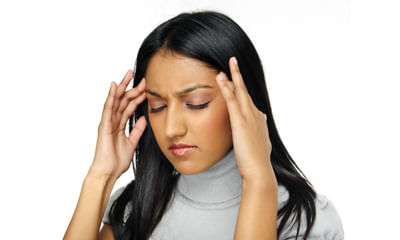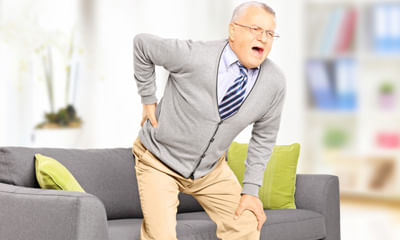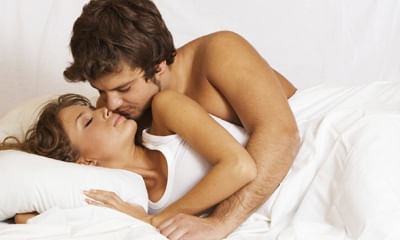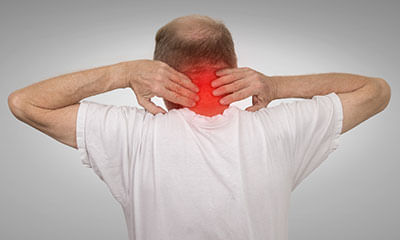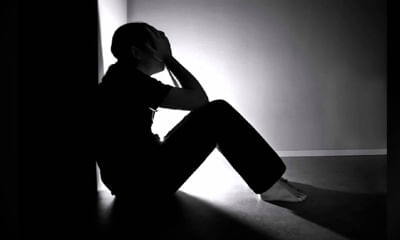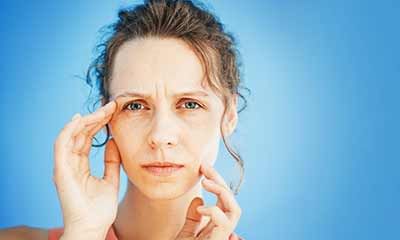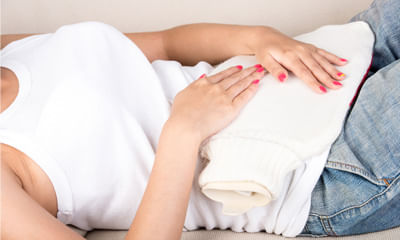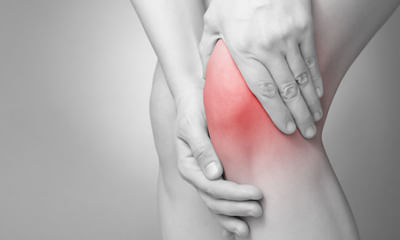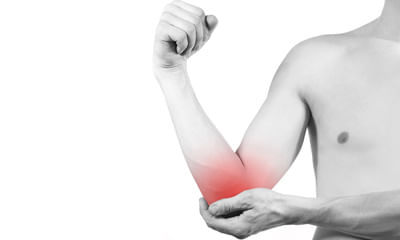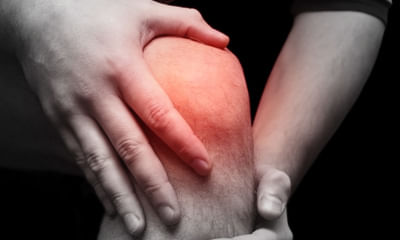Body Pain During Sleep
Hi doctor, I am asking the question for my friend. She is an assistant professor in college, it's been a 6 more years sh ...
Ask Free Question
Get bp and eye sight checked, x ray pns, thyroid hormones t3 t4 tsh 1.sleep.go to bed and get up about the same times every day, 3. Eat regular meals. 4. Drink plenty of water to avoid dehydration 5. Relax – listen soothing music. Walk for 5 mts 6.avoid .stress, 7. .avoid strong stimuli like loud noises, and smell of food 8. Keep your routine fixed and regular medicine can not be advised for open question for for medicine contact on private consultation.
I am 23 years old l. I have lower back pain from 1 year. And recently my shoulders are uneven from 2 months. I go to gym ...
Ask Free Question
Sit on an upright bench, like one you'd use for a shoulder press. Holding a dumbbell in your right hand, place your left hand under your left butt cheek and grab the side of the seat. Let your right hand hang down straight by your side and pull your shoulder blades back and together. Now raise your right shoulder up towards your ear-raise it straight up instead of rolling yourshoulder. Hold for a beat at the top, and then return to the start position. Complete a set of 10, and repeat on the other side. Knee pain. If you are overweight, losing weight will also help to reduce pressure on your knee.•mobility exercises rest. Avoid doing things that require you to bend at the hip or put a lot of pressure on the hip. Avoid sleeping on the side of your hip that is painful and sitting for long periods of time •cold and heat. Treating pain with heat and cold may help. Wrap an ice pack or a bag of frozen vegetables in a towel to ice your hip. A warm bath or shower may also help reduce your pain and prepare your muscles for stretching. •stretch. Gently stretching your body may reduce hip pain, especially if the cause is a strain or pinched nerve.
My girlfriend is having heavy white discharge and lower abdomen pain after 1 week of heavy bleeding from ipill can you p ...
Ask Free Question
Hi, lybrate user, •It indicates leucorrhoea she is suffering from. •Breasts pain during menstrual discharge is the result of unhealthy menstrual cycle need to be monitored. •She should take plenty of water to hydrate herself, eliminateing toxins from her body. •Ensure, sound sleep for 6 hours in the night. •She should take, homoeopathic medicine, underlying : @ Pulsatilla 30ch -5 drops, thrice. •Avoid , junk food, alcohol and nicotine. •Tke, care.
Dear sir / madammy son (22) has been diagnosed with ankylosing spondylitis its early diagnosis. His hlab27 is positive. ...
Ask Free Question
Ankylosing spondylitis ankylosing spondylitis is a cause of back pain in adolescents and young adults. Ankylosing spondylitis is a form of chronic inflammation of the spine and the sacroiliac joints chronic inflammation in these areas causes pain and stiffness in and around the spine, including the neck, middle back, lower back, and buttocks. Over time, chronic inflammation of the spine (spondylitis) can lead to a complete cementing together (fusion) of the vertebrae, a process referred to as ankylosis. Ankylosis causes loss of mobility of the spine. Pt treatment deep breathing for lung expansion and stretching exercises to improve spine and joint mobility. Are also advised to sleep on a firm mattress and avoid the use of a pillow in order to prevent spine curvature. Aerobic exercise is generally encouraged as it promotes full expansion of the breathing muscles and opens the airways of the lungs. Home remedies physical therapy for ankylosing spondylitis includes instructions and exercises to maintain proper posture. This includes deep breathing for lung expansion and stretching exercises to improve spine and joint mobility. Since ankylosis of the spine tends to cause forward curvature (kyphosis), patients are instructed to maintain erect posture as much as possible and to perform back-extension exercises. Patients are also advised to sleep on a firm mattress and avoid the use of a pillow in order to prevent spine curvature. Ankylosing spondylitis can involve the areas where the ribs attach to the upper spine as well as the vertebral joints, thus limiting breathing capacity. Patients are instructed to maximally expand their chest frequently throughout each day to minimize this limitation. Physical therapists customize exercise programs for each individual. Swimming often can be a very beneficial form of exercise, as it avoids jarring impact of the spine. Ankylosing spondylitis need not limit an individual's involvement in athletics. People can participate in carefully chosen aerobic sports when their disease is inactive. Aerobic exercise is generally encouraged as it promotes full expansion of the breathing muscles and opens the airways of the lungs. Cigarette smoking is strongly discouraged in people with ankylosing spondylitis, as it can accelerate lung scarring and seriously aggravate breathing difficulties. Occasionally, those with severe lung disease related to ankylosing spondylitis may require oxygen supplementation and medications to improve breathing. People with ankylosing spondylitis may need to modify their activities of daily living and adjust features of the workplace. For example, workers can adjust chairs and desks for proper postures. Drivers can use wide rearview mirrors and prism glasses to compensate for the limited motion in the spine. You should check with your doctor before using compression socks for your swelling. These special socks should be properly fitted for you and your needs. Also, be sure to wear them during the day and remove them before you go to bed. Leg elevation if you stand a lot during the day, try propping your feet up or soaking them in water when you get home to help prevent swelling. Muscle relaxant: reduces muscle tension and helps relieve muscle pain and discomfort. Transcutaneous electrical nerve stimulation (also known as tens) is something which helps ease muscle pain and spasms. You can strengthen the muscles by doing tonificationie. Improving the tone of the muscles by adding either weight cuffs / sand bags which will help you to improve the strength of the muscle.
Im 28 n not able to do simple tasks of daily life can not sleep n body weakness n pain in body feel anxiety and restless ...
Ask Free Question
Homeopathy has very effective and reliable treatment for your problem. No side effects. Please take homeopathic medicine, preliminary dose, arsenic album 200-once daily in the evening for 3 days. Book online appointment/consultation with me -(commencing from text consult rs 149, audio/ phone-rs 300) for further more comprehensive prescription and treatment.
I'm 22 years old. I feel unbearable pain on my period days also back pain legs pain breast pain dairiya pimple on face h ...
Ask Free Question
Hi, Lybrate user, • tk, plenty of water to hydrate yourself ,to eliminate toxins ,nourishing your body ,establishing your normal flow. • go for meditation to reduce your stress, anxiety to calm your nerve , easing your stress in order to improve haemoglobin level. • your diet be simple, non- irritant, easily digestible on time to maintain your digestion, avoiding gastric disorder, minimising cramp abdomen •tk, apple,carrots, cheese,milk, banana,papaya, pomegranate, spinach,almonds, walnuts to feel energetic ,improving haemoglobin level. •consult ,privetly for a faster recovery, till, then take, homoeopathic medicine, underlying: @ pulsatilla 30ch-5 drops ,thrice, orally, daily. •ensure, sound sleep in the night for at least 7 hrs.• avoid, caffiene,junk food, dust,smoke, exertion tk, care,
Dear mam/sir. I'm 22 years old female and I have periods peoblem. Periods ane k 2 week pehle se hi mujhe pairo main dard ...
Ask Free Question
Hi, Lybrate user, • you are suffering from dysmenorrhoea, need to opt certain natural norms:• tk, plenty of water to hydrate yourself ,to eliminate toxins ,nourishing your body ,establishing your normal flow. • your diet be simple, non- irritant, easily digestible on time to maintain your digestion, avoiding gastric disorder, minimising cramp abdomen •tk, apple,carrots, cheese,milk, banana,papaya, pomegranate, spinach,almonds, walnuts to feel energetic improving haemoglobin level. •consult ,privetly for a faster recovery, till, then take, homoeopathic medicine, underlying: @ pulsatilla 30ch-5 drops ,thrice, orally, daily. •ensure, sound sleep in the night for at least 7 hrs.• avoid, caffiene,junk food, dust,smoke, exertion tk, care,
I am 42 years old .now days I am getting some knee pain when I am sitting down or standing up, some time it pain and som ...
Ask Free Question
We do not prescribe medicines as we are physiotherapists if you want we can give you suggestions to address your knee pain. Knee pain this is a general knee pain and for this you can follow these measures: one keep a pillow right under the knee while sleeping, next is you can keep ice in the painful area for about 5--10 minutes, it looks like you are is important to check that. Anaemia always leads to the symptoms of being tired and also having body pain though there may not be any pathological reasons for knee pain. With knee exercises you will definitely feel better and muscles must be strengthened .•don't play through pain. As soon as you notice exercise-related knee pain, ice the area and rest. Until your knee is pain-free, avoid activities that put stress on your patellar tendon. •strengthen your muscles. Strong thigh muscles are better able to handle the stresses that can cause patellar tendinitis. Eccentric exercises, which involve lowering your leg very slowly after extending your knee, are particularly helpful. •improve your technique. To be sure you're using your body correctly, consider taking lessons or getting professional instructions when starting a new sport or using exercise equipment. •therapy •a variety of physical therapy techniques can help reduce the symptoms associated with patellar tendinitis, includingback pain it looks like you are anaemic. If you have back pain after you sit for long hours then it is due to your haemoglobin levels as it is important to check that. Anaemia always leads to the symptoms of being tired and also having back / leg pain though there may not be any pathological reasons for back pain. It looks like you are anaemic. And also you have to check with your vitamin and calcium, if the bones are weak then automatically the pain gets triggered more as there is less severity of the painbe strengthened 1.resisted terminal knee extension: make a loop with a piece of elastic tubing by tying a knot in both ends. Close the knot in a door at knee height. Step into the loop with your injured leg so the tubing is around the back of your knee. Lift the other foot off the ground and hold onto a chair for balance, if needed. Bend the knee with tubing about 45 degrees. Slowly straighten your leg, keeping your thigh muscle tight as you do this. Repeat 15 times. Do 2 sets of 15. If you need an easier way to do this, stand on both legs for better support while you do the exercise. 2•standing calf stretch: stand facing a wall with your hands on the wall at about eye level. Keep as arthritis is very common that you get generally bilaterally. Ice therapy would definitely help to reduce the inflammation. We also advise you to use knee cap which would help to prevent the knee from damaging further and also to maintain the quadriceps muscle tone •stretching exercises. Regular, steady stretching exercises can reduce muscle spasm and help lengthen the muscle-tendon unit. Don't bounce during your stretch. 3•strengthening exercises. Weak thigh muscles contribute to the strain on your patellar tendon. Exercises that involve lowering your leg very slowly after extending it can be particularly helpful, as can exercises that strengthen all of the leg muscles in combination, such as a leg press.•this is a general knee pain and for this you can follow these measures: one keep a pillow right under the knee while sleeping, next is you can keep ice in the painful area for about 5--10 minutes, it looks like you are is important to check that. Anaemia always leads to the symptoms of being tired and also having body pain though there may not be any pathological reasons for knee pain. With knee exercises you will definitely feel better and muscles must be strengthened.
Long term shoulder/ shoulder blade pain, shoulder moved forward winter it gets worstlong term facial paining term pain i ...
Ask Free Question
The symptoms you've listed can be complex and may indicate various underlying health conditions. Given the wide range of symptoms affecting different parts of your body, it would be best to consult with a primary care physician initially. They can conduct a thorough assessment, review your medical history, and perform any necessary physical examinations. Based on your symptoms, the primary care physician may refer you to one or more specialists, depending on their assessment. Here are some specialists who may be involved in your care: neurologist: given your long-term headache, memory issues, and double vision, a neurologist specializes in evaluating and treating conditions affecting the nervous system, including the brain and nerves. Rheumatologist: if you're experiencing long-term body pain, weakness, and difficulty sleeping, a rheumatologist specializes in diagnosing and treating conditions affecting the joints, muscles, and bones, such as fibromyalgia or autoimmune disorders. Ophthalmologist: since you're experiencing long-term effects on your eyes, including double vision and changes in prescription, an ophthalmologist specializes in diagnosing and treating eye conditions and may perform a comprehensive eye examination. Orthopedic surgeon: if your shoulder and shoulder blade pain is persistent and affecting your mobility, an orthopedic surgeon specializes in diagnosing and treating musculoskeletal conditions, including injuries and disorders of the shoulder. Ent specialist (otolaryngologist): if you're experiencing long-term facial pain, pain around the ear, and difficulty sleeping due to these symptoms, an ent specialist can evaluate conditions affecting the ear, nose, and throat, such as temporomandibular joint (tmj) disorder or sinusitis. In terms of blood tests, your healthcare provider may recommend various tests based on your symptoms and suspected underlying conditions. These may include: complete blood count (cbc) comprehensive metabolic panel (cmp) thyroid function tests inflammatory markers (e.g. Erythrocyte sedimentation rate, c-reactive protein) vitamin d levels autoimmune markers (e.g. Antinuclear antibodies) lyme disease testing (if relevant based on your history and symptoms)
Hello sir, my mother age 58 years no diabetes, no chronic diseases. Present since she is suffering with both knee pains, ...
Ask Free Question
Ice therapy would definitely help to reduce the inflammation. We also advise you to use knee cap which would help to prevent the knee from damaging further and also to maintain the quadriceps muscle tone. Stiffness might have developed due to weakness of the ligaments &inflammed cartilage. Specific knee exercises will also help ie. Keeping ball underneath the knee and keep pressing it. That's the simple exercise which will help you to strengthen the knee. You need to consume good protein and iron diet in your body which will help you to break the fatigue and general body pain. However non veg foods definitely makes you to get increased with the toxin levels in the body and it makes your knee to have less fluid content in the system. In general we suggest patients who has knee pain to eat more water content vegetables which will definitely help you to feel better. This is a general knee pain and for this you can follow these measures: one keep a pillow right under the knee while sleeping, next is you can keep ice in the painful area for about 5--10 minutes, it looks like you are is important to check that. Anaemia always leads to the symptoms of being tired and also having body pain though there may not be any pathological reasons for knee pain. With knee exercises you will definitely feel better and muscles must be strengthened. •patellar tendinitis: •risk factor •a combination of factors may contribute to the development of patellar tendinitis, including: •physical activity. •running and jumping are most commonly associated with patellar tendinitis. Sudden increases in how hard or how often you engage in the activity also add stress to the tendon, as can changing your running shoes. •tight leg muscles. Tight thigh muscles (quadriceps) and hamstrings, which run up the back of your thighs, can increase strain on your patellar tendon. ••muscular imbalance. •if some muscles in your legs are much stronger than others, the stronger muscles could pull harder on your patellar tendon. This uneven pull could cause tendinitis. •chronic illness. •some illnesses disrupt blood flow to the knee, which weakens the tendon. Examples include kidney failure, autoimmune diseases such as lupus or rheumatoid arthritis and metabolic diseases such as diabetes. •complications •if you try to work through your pain, ignoring your body's warning signs, you could cause increasingly larger tears in the patellar tendon. Knee pain and reduced function can persist if you don't tend to the problem, and you may progress to the more serious patellar tendinopathy. •prevention •to reduce your risk of developing patellar tendinitis, take these steps: •don't play through pain. As soon as you notice exercise-related knee pain, ice the area and rest. Until your knee is pain-free, avoid activities that put stress on your patellar tendon. •strengthen your muscles. Strong thigh muscles are better able to handle the stresses that can cause patellar tendinitis. Eccentric exercises, which involve lowering your leg very slowly after extending your knee, are particularly helpful. •improve your technique. To be sure you're using your body correctly, consider taking lessons or getting professional instructions when starting a new sport or using exercise equipment. •therapy •a variety of physical therapy techniques can help reduce the symptoms associated with patellar tendinitis, including: •patellar tendon strap. A strap that applies pressure to your patellar tendon can help to distribute force away from the tendon and direct it through the strap instead. This may help relieve pain. •iontophoresis. This therapy involves spreading a corticosteroid medicine on your skin and then using a device that delivers a low electrical charge to push the medication through your skin. •platelet-rich plasma injection. This type of injection has been tried in some people with chronic patellar tendon problems. Studies are ongoing. It is hoped the injections might promote new tissue formation and help heal tendon damage. •probably your stamina would've gone down due to over use of the joints and the metabolic activity is more due to running. You need to consume good protein diet so that your body will act as a reservoir. It will help you to fight against rather than affecting one particular area of your body for eg. Knee joint. For knee ligament pain or inflammation you need to keep ice which will help you to prevent the inflammation progressing further. •patellofemoral pain syndrome •usually fully relieved with simple measures or physical therapy. It may recur, however, if you do not make adjustments to your training routine or activity level. It is essential to maintain appropriate conditioning of the muscles around the knee, particularly the quadriceps and the hamstrings. •there are additional steps that you can take to prevent recurrence of patellofemoral •they include: •wearing shoes appropriate to your activities •warming up thoroughly before physical activity •incorporating stretching and flexibility exercises for the quadriceps and hamstrings into your warm-up routine, and stretching after physical activity •increasing training gradually •reducing any activity that has hurt your knees in the past •maintaining a healthy body weight to avoid overstressing your knees ••d cartilageacl •joints, ie. In the upper limbs if the pain is present in the fingers/wrist and in the lower limbs it the pain is present in the toes/ ankle, then we shall definitely say it is rheumatic arthritis. •if your proximal joints (ie. Shoulder, hip & knee has pain) then you can pour hot (warm) water in that area to reduce the inflammation. If you have pain in the distal joints ie. Wrist, fingers, ankle, toes then you can wear either elbow brace or wrist brace which will help you to feel warm and very protective. And also immerse the distal joints in the hot water tub which will help you to reduce the pain. ••knee pain during driving or watching movie. •it might due to lack of movements in the knee while the joints are immobilized during driving and while watching movies. It is important that you need to have movements in and around the knee so that the blood flow will not be disturbed. •knee ligament laxity•if you have problem in your legs then it might be due to ligament laxity where your legs would become very weak due to the old ligament injury and that should be treated immediately. •wear knee cap so that you will feel firm while walking or climbing stairs.•this is a general strain and for this you can follow these measures: one keep a pillow right under the knee while sleeping, next is you can keep ice in the painful area for about 5--10 minutes, if pain still persists you can stretch your body by twisting the waist on both sides how we used to do in the school drill similarly you can try! one time you can do hot water fermentation that would help to reduce the muscle strain.•legs becoming numb and also pain is there when the patient walks for 10-15 minutes?•it looks like you are anaemic. If you feel that the legs are becoming numb then keep your legs warm which is important, probably you can wear mcr chappals inside the house/ socks inside the house. Put a door mat when ever you sit so that you will feel comfortable. Also pour warm water in the legs which would help you to get better circulation. •knee pain. If you are overweight, losing weight will also help to reduce pressure on your knee. •knee pain, when leg folding time get pain. The importance of buying braces and splints from us – orthopaedic support braces we suggest you to wear knee brace which is available at our clinic. If you want you can buy from us, if you are far away from chennai we can send you by courier. The reason why we are conveying you to buy from us is we can demonstrate over the videocall (using whatsapp) and also we can monitor you throughout when to wear it and how long to wear it. And also if you find any difficulty wearing the brace you can also revert back to us for few more suggestions and we can propose you good solution how to go about it. Resisted terminal knee extension: make a loop with a piece of elastic tubing by tying a knot in both ends. Close the knot in a door at knee height. Step into the loop with your injured leg so the tubing is around the back of your knee. Lift the other foot off the ground and hold onto a chair for balance, if needed. Bend the knee with tubing about 45 degrees. Slowly straighten your leg, keeping your thigh muscle tight as you do this. Repeat 15 times. Do 2 sets of 15. If you need an easier way to do this, stand on both legs for better support while you do the exercise. Standing calf stretch: stand facing a wall with your hands on the wall at about eye level. Keep as arthritis is very common that you get generally bilaterally. Ice therapy would definitely help to reduce the inflammation. We also advise you to use knee cap which would help to prevent the knee from damaging further and also to maintain the quadriceps muscle tone 1. Heel and calf stretch 2. Quadriceps stretch to do this stretch: 1. Stand next to a wall or use a chair for support. Your feet should be shoulder-width apart. 2. Bend one knee so your foot goes up toward your glutes. 3. Grab your ankle and gently pull it toward your glutes as far as you can comfortably. 4. Hold for 30 seconds. 5. Return to the starting position and change legs. 6. Repeat 2 times on each side. You need to consume good protein and iron diet in your body which will help you to break the fatigue and body pain. You have to reduce the weight by walking minimum 1 km per day. Slowly reduce the weight and slowly avoid adding salt in the diet which will help you to prevent water retention in the body. Excess salt in general leads to water in the body which might be the reason for you to have leg pain. Hotwater fermentation that would help you to get relieved from joint pains. But food precautions, it is better to avoid tamarind in the food rather to add lime or mango. You can generally do basic aerobic exercises which will definitely help to improve the body weakness. Consume good protein and vitamin diet which will help you to improve your weakness of the whole body. You can give good vitamin d and calcium which will help to have quick healing. If you are a non veg person consume seer fish or if you are a veg person eat mushrooms which has vitamin d3. You need to consume water content vegetables which will make you feel hydrated. A good brace will protect your knee and take the pressure off your meniscus, allowing it to rest. Your doctor may recommend the rice regimen—rest, ice, compression, and elevation—to treat a eroded cartilage which is the main reason for the synovial fluid to get drained. Resting your knee can help relieve your symptoms. Steps to heal a worn out cartilage naturally: rest: it's crucial to rest your knee after it starts to ache. You should not participate in activities where you could cause additional strain. Ice: apply ice to your knee for 15 minutes at four-hour intervals.

